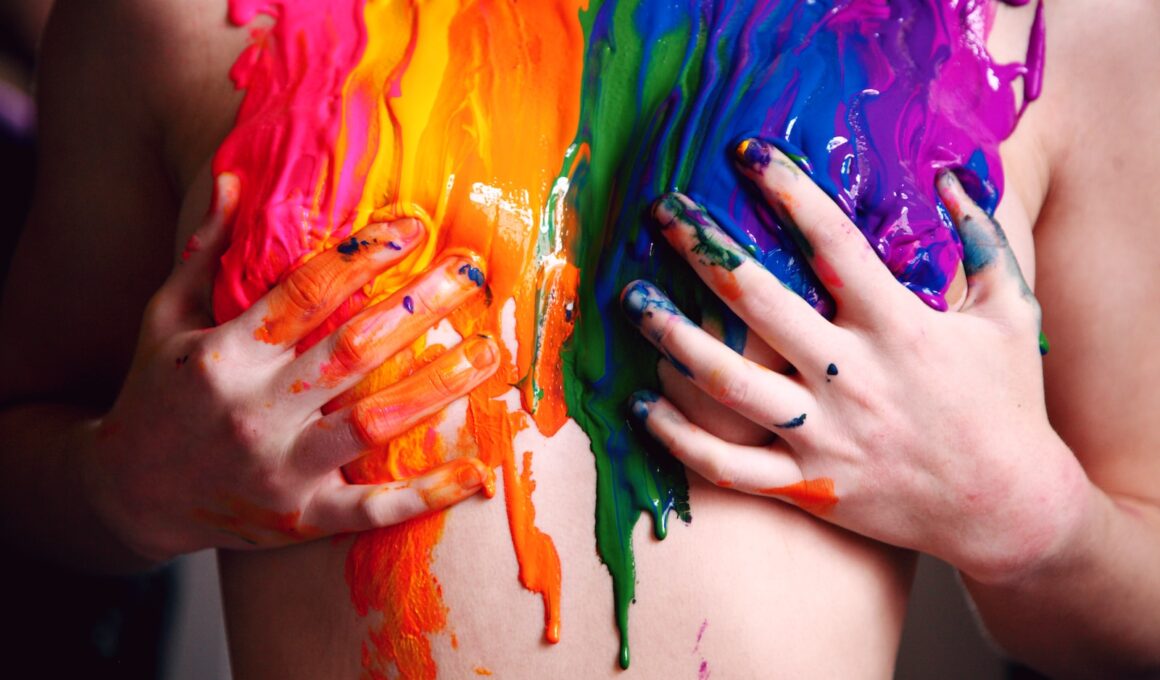There are several different variations of the lesbian flag, and each one has its own meaning. The most popular is a seven-stripe version created in 2018 by Emily Gwen. Dark orange stands for gender non-conformity, light orange represents community, white signifies unique relationships to womanhood, pink marks serenity and peace, and dark rose marks femininity.
Orange
The first modern-day lesbian flag was introduced by Natalie McCray in 2010 and was dubbed the “Lipstick Lesbian Flag,” because it featured various shades of pink and red with a red kiss print on top. Although it was popular, some lesbians argued that the lipstick flag excluded masculine-expressing women and perpetuated stereotypes of butch lesbians. The new lesbian flag was introduced by Tumblr blogger Emily Gwen in 2018 and redesigned McCray’s original striped flag, removing the lipstick kiss print and adding shades of orange to represent the unity of feminine, masculine, and non-femme lesbians, as well as trans and gender nonconforming lesbians.
The dark orange stands for gender non-conformity, the orange for independence, and the light orange for community. The white represents unique relationships to womanhood, while the pinks (dusty, blush, and dark rose) stand for serenity and peace, love and sex, and femininity, respectively.
The bisexual flag was created by Michael Page in 1998 to celebrate the increased visibility of bisexuals within the LGBT community and society at large. The overlapping triangles are meant to symbolize the many types of sexual attraction that exist.
Pink
Pink is a common color used in lesbian flags. It is the color of violets, which have long been associated with women and lesbianism. It also represents the feminine side of bisexuality, which is a sexual orientation that includes attraction to people who do not identify as strictly men or women. It may be used to represent a desire for gender equality or as a more inclusive alternative to the term “bisexual.”
The most popular lesbian flag is the lipstick lesbian flag, which features a rainbow of different shades of pink and sometimes comes with a red kiss to symbolize lipstick lesbians. It was created in 2018 by Tumblr user Emily Gwen and has become the most recognized LGBT flag.
Another popular flag is the labrys lesbian flag, which features a black inverted triangle repurposing a symbol that lesbians were forced to wear by the Nazis during World War II. This flag is often seen in the context of cis feminist activism, but has been criticized for its lack of representation for butch and non-femme lesbians.
White
There are several iterations of the lesbian flag, including a five-stripe version that was introduced in 2018 by Tumblr blogger Emily Gwen. It includes dark orange (gender non-conformity), light orange (community), white (unique relationships to womanhood), pink (serenity and peace), and dusty pink (feminity).
There’s also a variant of the flag with purple stripes. Del Rio explains that the color purple, or lavender, has a history of representing queer people, from Sappho’s reference to violets to effeminate cultural practices in the 19th century.
A cisgender gay man named Sean Campbell designed the first modern lesbian flag in 1999, which had seven colored horizontal strips. The original labrys has since undergone many iterations, including a redesign in 2010 called the lipstick lesbian flag, which featured six shades of pink and red with a white strip in the center. Despite its origins in the LGBTQ community, the lipstick flag is often used by women who identify as butch. It is considered the oldest lesbian pride flag. Its meaning is a complex one, and the exact colors and their meanings have varied over time.
Cyan
A variant of the pink-and-red lipstick lesbian flag that has been used since 1999, this design was created by a Tumblr user named dorian-rutherford. It is often used by butch lesbians and other gender nonconforming women as a symbol of representation. The colors of this flag are meant to represent different aspects of butch and femme identity: gender non-conformity (dark orange), community (light orange), unique relationships to womanhood (white) and feminism and femininity (pink).
A version with seven stripes was originally posted on Tumblr by Emily Gwen in 2018, and was later replaced with a five-stripe flag that was more widely adopted. It is meant to be a more inclusive flag for people who identify as butch, queer and/or transgender, and it uses the colors of the bisexual pride rainbow: dark orange, light orange, white, pink and cyan.
This color scheme also represents pansexuality and transgenderness, with yellow representing attraction to people who don’t identify as male or female. The hex, RGB and CMYK codes for these colors are listed in the table below.
Blue
The lesbian flag was designed in 2018 by Tumblr blogger Emily Gwen. It features seven stripes, with each stripe representing a different aspect of the lesbian community. The colors are dark orange for gender non-conformity, orange for independence, light orange for community, white for unique relationships to womanhood, pink for serenity and peace, dusty pink for love and sex, and dark rose for femininity.
Another version of the lesbian flag is designed by butch sex-positive and nonfemme identifying women, and is called the lipstick lesbian flag. This flag was first introduced in 2010 by Natalie McCray on her now-defunct blog, and features a red kiss mark in the upper left corner.
A fourth version of the lesbian flag is created by Milith Rusignuolo, and is known as the graysexual pride flag. It features two lines of purple on the top and bottom, with two grey lines in between and a white center line. These represent asexuality (purple), allosexuality (grey) and asexuality again (white). This flag is also used to represent intersex people, since they are neither male nor female and fall somewhere in between.









